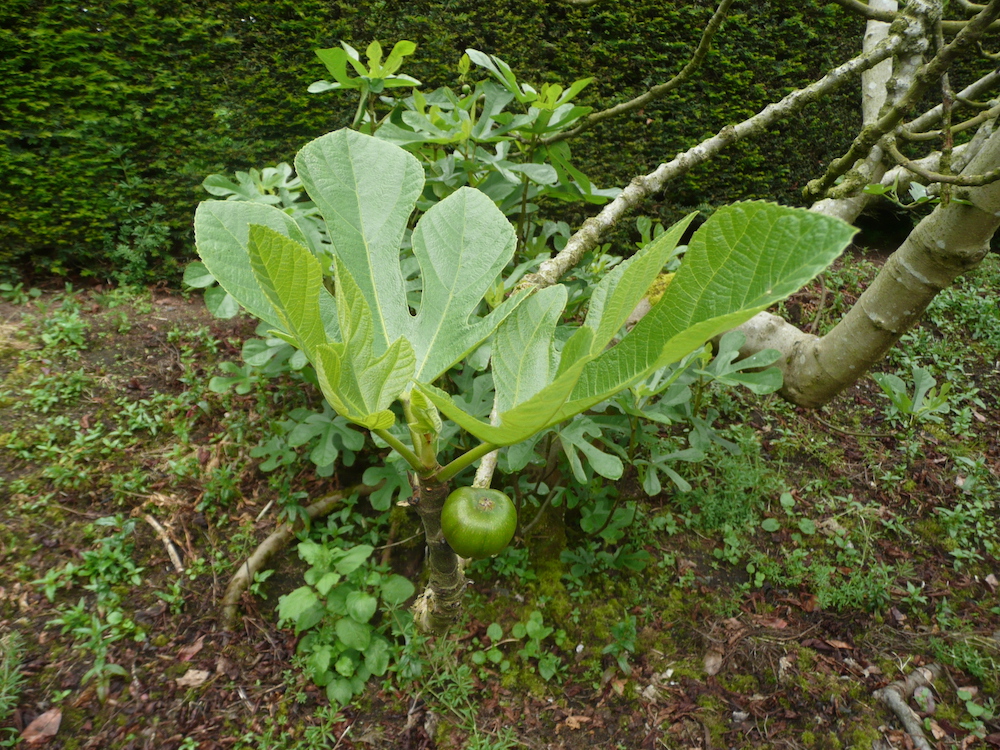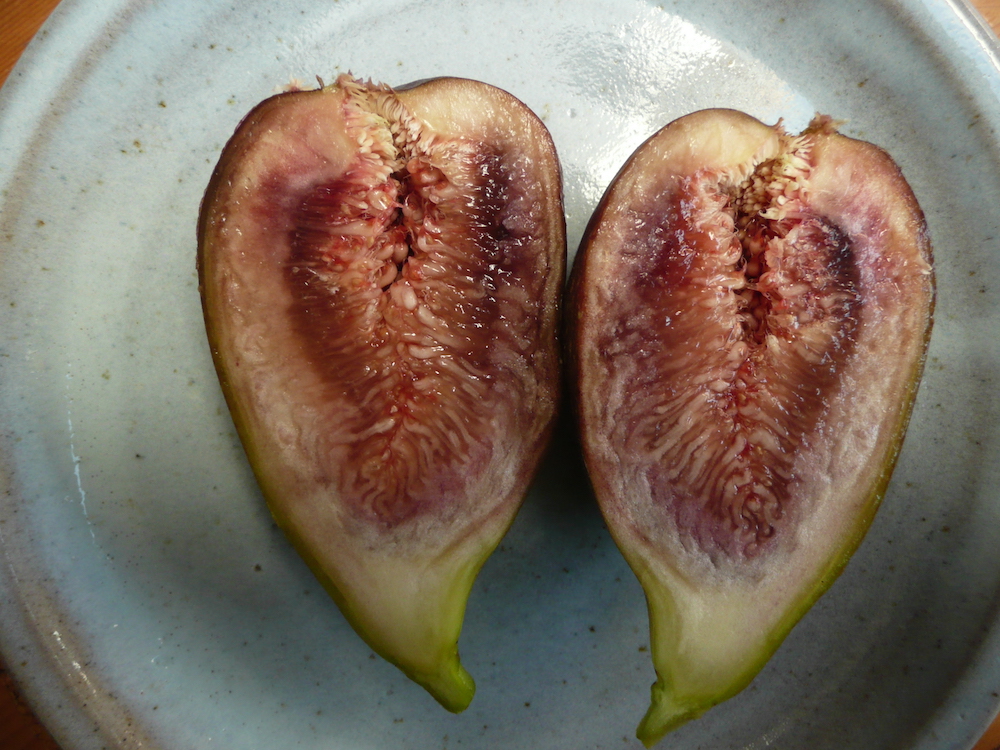Ficus carica L.
Fig (common fig)
The fig as we know it is thought to have originated in Asia Minor, with the first steps in its domestication taking place in the Fertile Crescent. Over time it has gone from its wild state with small inedible fruit to the tropical-looking tree that bears the delectable fruit that we know today, achieved through hundreds of years of selection and cloning.
Fig fruit have a fascinating botany: firstly they are not a true fruit, but a swollen receptacle that is filled with tiny flowers that in the wild fig tree are pollinated by a small wasp just a millimetre long that crawls inside the female fig carrying pollen. The pollen comes from a male fig, called the caprifig, that grows on a separate male tree, ie fig is dioecious. The male caprifigs then act as brood chambers for the eggs of the wasp and when the adult wasps emerge, carrying pollen to the female trees in early summer, the cycle continues.
This process, called caprification has to happen today in the figs known as Smyrna figs which are common throughout the Mediterranean. The figs we know and grow in the British Isles are of the common or Adriatic fig variety, which are parthenocarpic, that is the figs swell and ripen without the need for pollination. There is no need for the fig wasp, conveniently, as their range does not extend to these islands with a cooler climate.
The two specimens growing outdoors in Belfast Botanic Gardens are Common or Adriatic fig and are to be found at the back of the long herbaceous border, facing north-east, incidentally. These have the potential to produce an annual crop of figs, from the figs produced early in the year that grow on during the summer until ripe. This is know as the breba crop. The second or main crop figs are too late to ripen in this country without greenhouse protection.
To keep it fruitful, a common fig should be pruned to keep it compact. This is best achieved by pruning tips of branches in April, later reducing the resulting side shoots to four leaves in June. If a fig tree has grown leggy, a lot of the old wood can be removed in March, bearing in mind that this could remove most of that year’s crop! A balance has to struck between removal of old wood and keeping a good supply of tiny figs for that year’s crop.
Good selections to grow outdoors in this country are ‘Brown Turkey’ and ‘Brunswick’. Both are hardy and productive, yielding figs of good flavour. But there is a good range of other cultivars that will ripen a breba crop without pollination, both outdoors and under cover. It is advisable to choose a warm sunny site to get the best crops from a fig. A south-facing wall would be ideal.
see http://waynesword.palomar.edu/arbimg10.htm for fig biology




* another Fig tree at the other end of the herbaceous border 54o 34.915N, 5o 55.993W.
Photos taken in Belfast Botanic Gardens in 2014. Copyright: Friends of Belfast Botanic Gardens.
